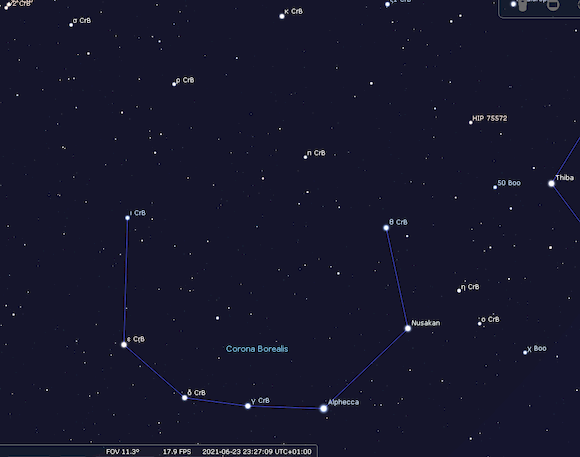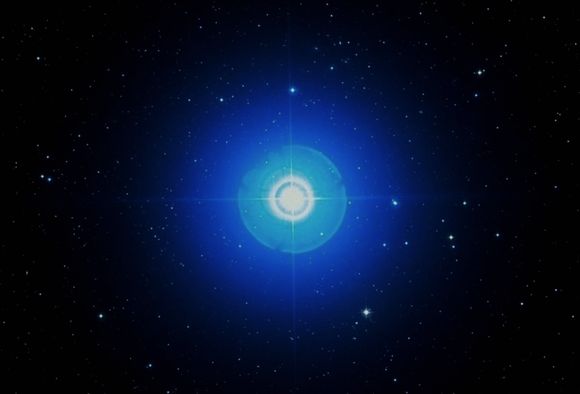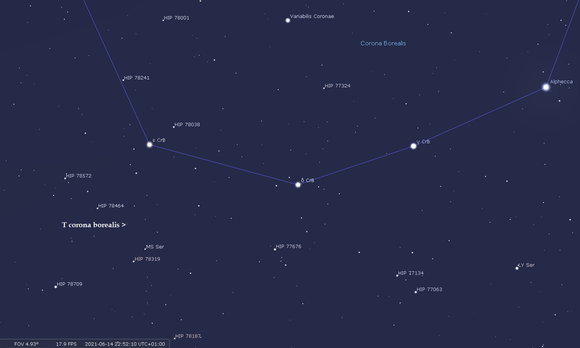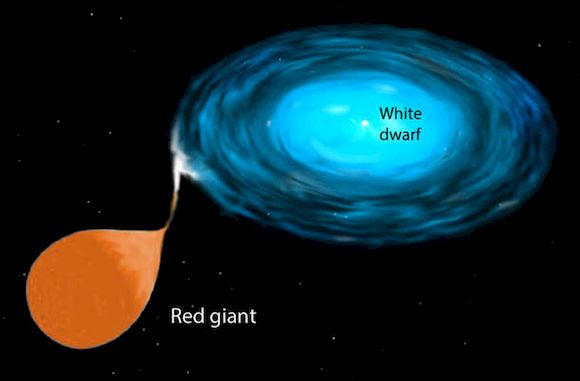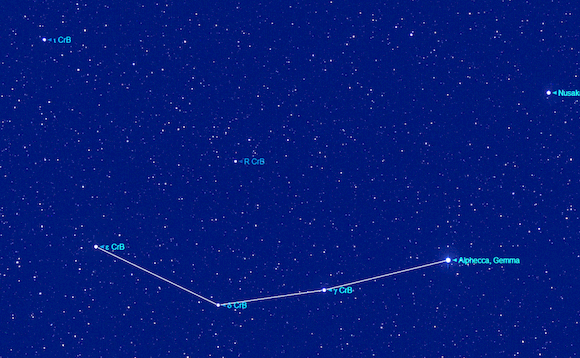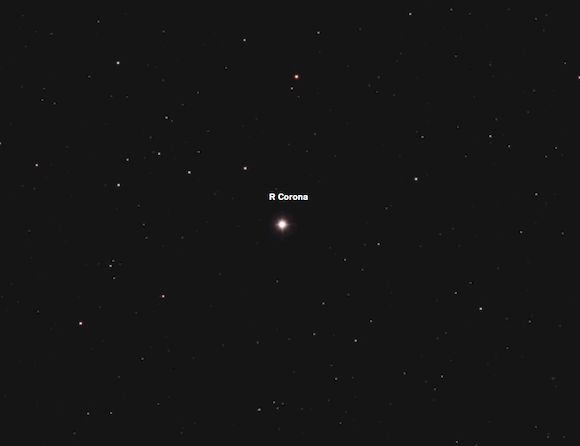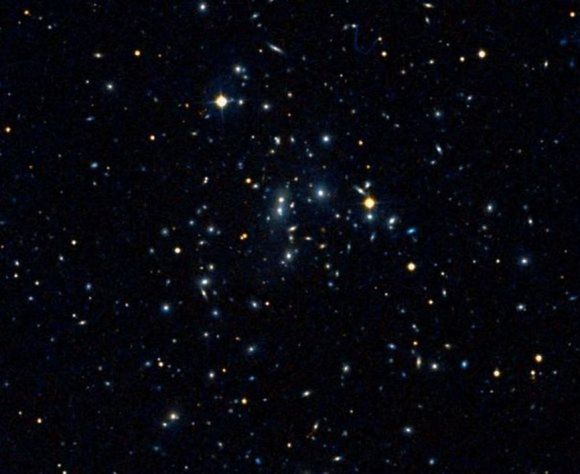The Northern Crown - Corona Borealis
Corona Borealis is one of the original 48 constellations listed in the Almagest by the 2nd-century astronomer Ptolemy. Covering 179 square degrees Corona Borealis is quite small and ranks 73rd of the 88 modern constellations by area. It is bordered by Boötes to the north and west, Serpens Caput to the south, and Hercules to the east. Although small, the groups brightest stars form a distinctive semicircular arc which does resemble a stellar crown or tiara. From UK latitudes Corona is not quite circumpolar, the ‘crown’ dipping just below the horizon, although the top half of the constellation remains visible.
Its Latin name, inspired by its shape, means "northern crown". In Greek mythology, Corona Borealis was linked to the legend of Theseus and the Minotaur. It was generally considered to represent a crown given by Dionysus to Ariadne, the daughter of Minos of Crete, after she had been abandoned by Theseus. She had played an instrumental role in helping Theseus slay the Minotaur, a creature with the head of a bull on a human body. Ariadne’s mother, Pasiphae had given birth to the creature after copulating with a bull owned by King Minos. In order to cover up the shame, the Minotaur was imprisoned in a labyrinth so complex, neither the Minotaur nor anyone else who ventured in could ever find their way out. When Theseus, son of King Aegeus of Athens, came to Crete, Ariadne fell in love with him instantly, telling him of the existence of the Minotaur.

A middle-age depiction of the Minotaur legend (click for larger image)
Theseus offered to kill the creature, and after consulting Daedalus; designer of the underground maze, she gave him a ball of thread to use in finding his way. Theseus tied one end to the door of the labyrinth and payed out the thread as he went along, eventually locating the Minotaur and slaying the beast. Re-emerging Theseus duly married Ariadne, sailing off with her, but on reaching the island of Naxos, he deserted her. Inconsolable, there she sat cursing Theseus for his ingratitude, vowing never to marry a mortal again. Thus Dionysus taking pity on her and being a god won Ariadne over and to commemorate their marriage the crown she wore at the wedding was placed in the heavens. An alternate version has Dionysus give the crown to Ariadne, who in turn gives it to Theseus on his arrival in Crete to kill the Minotaur. Theseus used the crown's light to escape the labyrinth after dispatching the Minotaur. The crown was later set it in the heavens.
Seven stars make up the constellation's distinctive crown-shaped pattern; all are 4th-magnitude except for Alpha Coronae Borealis which is considerably brighter at magnitude 2.2. The other six stars are (clockwise) Theta, Beta, Gamma, Delta, Epsilon and Iota Coronae Borealis. Within the constellation's borders, there are 37 stars brighter than or equal to apparent magnitude 6.5.
- Alpha Coronae Borealis is officially named Alphecca by the IAU, but it is also known as Gemma. It appears as a blue-white Algol-type eclipsing binary star of magnitude 2.2 varying by 0.1 magnitude in a period of 17.4 days. This makes it the 67th brightest star in the night sky visible to the naked eye. The primary is a white main-sequence star of spectral type A0V, 2.91 times the mass of the Sun and 57 times more luminous. The average surface temperature of Alphecca A, have been estimated at around 9700 K, 1.6 times hotter than our sun. It is surrounded by a debris disk with a radius of 5.5 billion miles, likely to be the result of the stars quick rotation rate of 139 km / 86.3 miles per second. The secondary companion is a ‘Sun sized’ yellow main-sequence star of spectral type G5V with a surface temperatures of around 5.800 K, just 22 K hotter than our sun. Alphecca formed around 0.314 billion years ago and is believed to be a member of the Ursa Major Moving Group of stars that share a common motion through space. If so, it is probable that it will leave the crown asterism in the far future. Alphecca lies 75 light-years from Earth
- Beta Coronae Borealis or Nusakan is a spectroscopic binary system whose two components are separated by 10 AU and orbit each other every 10.5 years and lie 112 light years from Earth. The brighter component is a rapidly pulsating star with a period of 16.2 minutes. Of spectral type A5V it has around 2.1 solar masses and is 25 times more luminous. The smaller star is of spectral type F2V around 1.4 solar masses 5 times more luminous. The star shows very nearly the same space motion as the Hyades cluster in Taurus and may be an outlying member.
- Near Nusakan is Theta Coronae Borealis, a binary system that shines with a combined magnitude of 4.13 approximately 380 light-years distant. The brighter component, Theta Coronae Borealis A, is a blue-white star that spins at a rate of almost 400km per second. It is surrounded by a debris disk.
- Flanking Alpha to the east is Gamma Coronae Borealis, another binary star system, whose components orbit each other in roughly 93 years and are separated by 2.6 billion miles. The components are main sequence stars of spectral types B9V and A3V located 170 light-years away.
- Delta Coronae Borealis is a 4th magnitude a yellow giant star of spectral type G3.5III that is currently around 7.5 times the size of our Sun. For most of its existence, Delta Coronae Borealis was a blue-white main-sequence star of spectral type B before it ran out of hydrogen fuel in its core. Its luminosity and spectrum suggest it has just crossed the Hertzsprung gap, having finished burning hydrogen at the core and just begun burning hydrogen in a shell that surrounds the core.
- Zeta Coronae Borealis is a double star with two blue-white components 6.3 arc seconds apart that can be readily separated at 100x magnification. The primary is of magnitude 5.1 and the secondary is of magnitude 6.0.
- Nu Coronae Borealis is an optical double, whose components are a similar distance from Earth but have different radial velocities, hence are assumed to be unrelated. The primary, Nu1 Coronae Borealis, is a red giant of spectral type M2III and magnitude 5.2 lying 625 light-years distant. The secondary, Nu2 Coronae Borealis, is an orange-hued giant star of spectral type K5III and magnitude 5.4, estimated to be 580 light years distant.
- Sigma Coronae Borealis, is a true multiple star system divisible by small amateur telescopes. It is actually a complex system composed of two stars as massive as the Sun that orbit each other every 1.14 days. A third Sun-like star orbits them every 726 years. The fourth and fifth components belong to a binary red dwarf system some 14,000 AU (1 AU = 93 million miles) distant from the other three stars. ADS 9731 is an even rarer multiple system in the constellation, composed of six stars, two of which are spectroscopic binaries.
Corona Borealis is home to two remarkable variable stars. T Coronae Borealis is a cataclysmic variable star also known as the Blaze Star. Normally around mag 10, on two occasions in the past it has brightened to magnitude 2 in a matter of just hours, exceeding the brightness of Alphecca! This is triggered by a nuclear chain reaction and the subsequent explosion. T Coronae Borealis is one of a handful of stars called recurrent novae. The first recorded outburst of T Coronae was in May 1866 when it remained a naked eye object for 8 nights only. Its second recorded outburst was in February 1946. T Coronae Borealis is a close binary star with a red-hued M class giant primary and a white dwarf secondary which is partially degenerate. , the two stars orbit each other over a period of approximately 8 months. Outbursts of the dwarf star are triggered by an interchange of material. The expansion velocity of the 1946 outburst; some 2700 miles per second, has not been equalled by any other nova. The distance of T Corona is not certain, but is around 2800 - 3000 light years.
Originally identified in 1796 by the English amateur astronomer, Edward Pigott, R Coronae Borealis is a yellow-hued variable supergiant star, over 7000 light-years from Earth, and prototype of a class of stars known as R Coronae Borealis variables that are extremely hydrogen deficient, but rich in carbon. possibly the result from the merger of two white dwarfs. Normally at magnitude +6 most years, it will suddenly and periodically begin to fade, dropping as low as magnitude 15, but normally around 12, and then slowly increases over several months. During minimum the light is not constant, but fluctuates erratically. It once remained at minimum for 10 years. These declines are a consequence of ejected carbon dust from the star, which then obscure it. Hubble Space Telescope images reveal extensive dust 'soot clouds' out to a radius of almost 2000 AU from the star, corresponding with a stream of fine dust associated with the star's stellar wind as well as coarser dust ejected periodically.
There are numerous other variables of reasonable brightness for amateur astronomer to observe, notable examples are:-
- V Coronae Borealis, one of the reddest stars in the sky with a surface temperature of 2877 K and is a remote 8810 light-years distant from Earth. Varying between magnitudes 6.9 and 12.6 over a period of 357 days,[37] it is located near the junction of the border of Corona Borealis with Hercules and Bootes.
- Located 1.5° northeast of Tau Coronae Borealis, W Coronae Borealis ranges between magnitudes 7.8 and 14.3 over a period of 238 days.
- Y Coronae Borealis is a pulsating white dwarf around 70% as massive as the Sun, yet is only one hundredth the diameter.
- UW Coronae Borealis is a low-mass X-ray binary system composed of a star less massive than the Sun and a neutron star surrounded by an accretion disk that draws material from the companion star. It varies in brightness in an unusually complex manner: the two stars orbit each other every 111 minutes, but there is another cycle of 112.6 minutes, which corresponds to the orbit of the disk around the degenerate star. A period of 5.5 days indicates the time the accretion disk—which is asymmetrical—takes to precess around the star.
Corona Borealis contains few deep sky objects observable with amateur telescopes. It does harbour several distant galaxy clusters including RX J1532.9+3021, which is approximately 3.9 billion light-years from Earth. At the cluster's center is a large elliptical galaxy containing one of the most massive and powerful supermassive black holes yet discovered. Abell 2065 is a highly concentrated galaxy cluster containing more than 400 members all concentrated in an area half a degree wide - about the same as a full moon. The brightest members are 16th magnitude; the cluster is more than one billion light-years from Earth.
On a larger scale still, Abell 2065, along with Abell 2061, 2067, 2079, 2089, and Abell 2092, make up the Corona Borealis Super cluster.
Chart/picture credits:- Stellarium and Starry Night Pro plus 8, unless otherwise stated
- Log in to post comments

